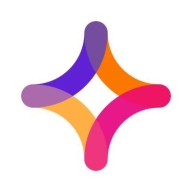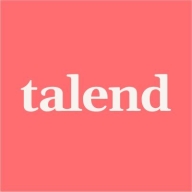

Talend Data Management Platform and Jitterbit Harmony compete in data integration and management. Jitterbit Harmony seems to hold a slight advantage due to its robust features, despite Talend’s competitive pricing and excellent support.
Features: Talend focuses on data quality tools, strong integration capabilities, and support for various data sources. Jitterbit stands out with its user-friendly drag-and-drop interface, strong API integration, and efficient project turnaround.
Room for Improvement: Talend could enhance its user interface for easier operation and streamline its integration process for faster project initiation. Improvements in API integrations could also be beneficial. Jitterbit might benefit from more competitive pricing, broader data source compatibility, and enhanced data quality features to match Talend’s comprehensive offerings.
Ease of Deployment and Customer Service: Jitterbit offers straightforward deployment with efficient customer service known for quick resolutions. Talend provides flexible deployment options and detailed customer support, addressing a broader range of technical issues.
Pricing and ROI: Talend offers competitive setup costs and strong ROI due to its scalability and comprehensive data management functionalities. Jitterbit incurs higher initial costs but balances this with rapid ROI from efficient data handling and automation capabilities, focusing on quick operational improvements.
We have not encountered many issues with remote engines, and the interfaces are properly developed.
Data management could also encompass APIs and real-time streaming data integration.
I have successfully requested the necessary patch from Talend support multiple times to align different studio versions across the team of developers.


Jitterbit Harmony is a comprehensive platform for data integration and API management, enabling seamless synchronization and automation across cloud-based and on-premises applications.
Users leverage Jitterbit Harmony to integrate systems like ERP and CRM applications, simplifying complex data workflows and enhancing automation. It supports efficient data migration and ensures smooth connectivity, handling diverse integration needs and helping streamline business processes. Users emphasize its drag-and-drop functionality and extensive templates, which contribute to its robust performance. However, improvements are needed in data mapping, error message clarity, and documentation, especially when dealing with large data volumes.
What are the key features of Jitterbit Harmony?Companies across retail, manufacturing, healthcare, and finance sectors use Jitterbit Harmony to integrate critical applications and automate workflows. In retail, it connects inventory systems with sales platforms, reducing manual effort. Manufacturers sync their ERP systems with supply chain software, optimizing operations. Healthcare organizations integrate patient management systems with insurance databases, streamlining patient care. Financial institutions use it to connect accounting software with banking systems, ensuring real-time financial data exchange.
We monitor all Data Integration reviews to prevent fraudulent reviews and keep review quality high. We do not post reviews by company employees or direct competitors. We validate each review for authenticity via cross-reference with LinkedIn, and personal follow-up with the reviewer when necessary.